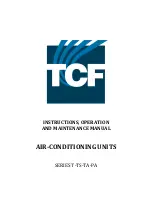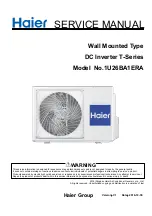2212 0215 19
11
2.2 Air flow
Flow diagram (example image showing PD3 type dryer)
Note
–
Pressure regulator (5) is only fitted to HTM models, is not present on NFPA instrument air units.
Description
Compressed air enters water trap (WSD), eliminating liquid water from the air. Next, the air
flows through UD+ filter, removing contaminating particles and oil mist. The air then enters
the PD dryer, eliminating water damp and producing dry air with a pressure dew point of
minimum -
31 ˚C (
-
23.8 ˚F). Next is the QDT filter where oil vapour and smells of the dried a
ir
are reduced (active carbon) and where the conversion of CO into CO2 takes place (optional
catalyst in QDT+). Finally the air flows through the PDp+ filter, hereby eliminating remaining
dust particles for absolute purity.
Pressure switch (21) operates as an hardwired alarm in case a failure with the ES-MED
controller should occur. Should the ES-MED fail to operate the compressors, resulting in a
decrease of the pressure, each compressor will start to operate independently once their
outlet pressure reaches a certain critical pressure level (emergency forced local). The
pressure switch, installed on the inlet of the purifier, thus linked to the outlet pressure of each
compressor will also be triggered at this pressure level, resulting in a Plant fault being
transmitted to the building management system.
Specifications of the outlet air can be found in section
Summary of Contents for dMED 025
Page 2: ......


















